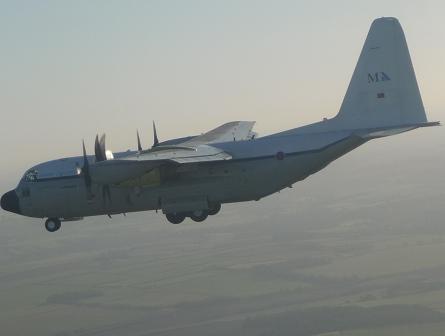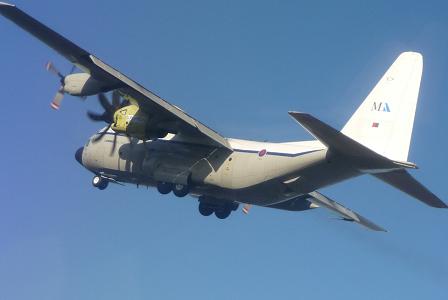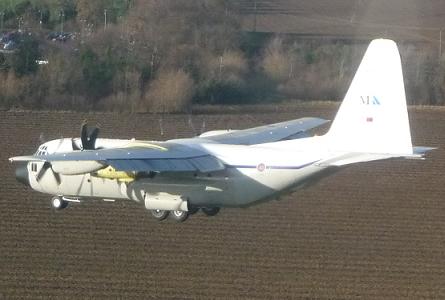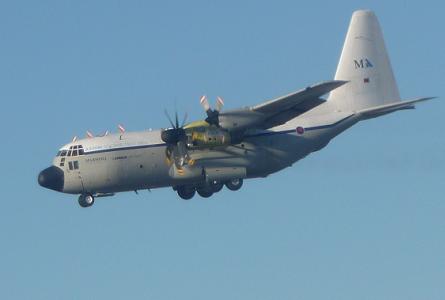Airbus has today carried out the first flight of the Europrop International TP400 powerplant for the belated A400M military transport, a test lasting 1h 15min.
A single example of the engine has been fitted to the left inboard position on a Lockheed Martin C-130K test-bed aircraft.
It departed at 10:44 from Cambridge in the UK and landed at 11:59. Airbus' military division says the test involved assessing the TP400 at a thrust equivalent to the maximum level of the C-130's other three Rolls-Royce Allison T56s - although the new engine is capable of delivering twice the power.
The TP400's response was tested in several aircraft configurations at speeds up to 165kt (305km/h) and to a height of 8,000ft (2,440m).
 |
|---|
 |
|---|
"This was a first step in the aircraft envelope opening," says Airbus Military. "It will allow progress towards the completion of the approximately 50 flight-test hours planned to reach sufficient maturity for the engine itself."
Airbus says that the engine will be able to fly on the A400M once the powerplant reaches a "satisfactory" state. "This and subsequent flights will comfort us in the performance of the new engine itself, as well as its reliability, in a real flying environment," says A400M programme chief Rafael Tentor.
|
|
|---|
 |
|---|
© Airbus Military |
He says that completion of the first flight is a "significant step" for the project, which has been plagued by delays centred on development of the powerplant.
Europrop International has so far clocked up over 2,100hr in ground tests of the eight-bladed TP400. Airborne testing using the C-130 is being conducted by Marshall Aerospace.
Airbus flight test engineer Jean-Philippe Cottet says the TP400 was taken to around 30-35% of its maximum power output of 11,000shp (8,200kW) for the first take-off, and that the flight test team “had no issues”.
“We have seen the engine respond during throttle movements exactly as we expected,” says Cottet. “We have confidence that it is quite comparable to the simulator.”
Cottet says the team will progressively increase the engine’s power output to its maximum rating, saying: “We want to achieve maximum power quite early.” This will be required for planned flight tests above 30,000ft, he adds.
The modified C-130 will now undergo post-flight checks including a boroscope inspection of its one TP400, with analysis likely to be complete within the next week. Some flight test equipment updates will be made to the aircraft early next month, before resuming flight tests in the second half of January.
The test team still expects to achieve a total of 50 flight test hours with the modified C-130, says Cottet. “It’s an amount of hours that will discover the main issues that we will have with the engine,” he notes.
Additional reporting by Craig Hoyle
Source: Air Transport Intelligence news
























